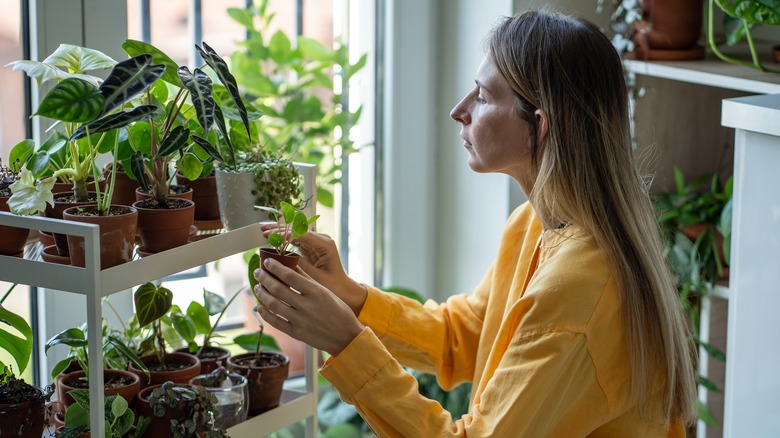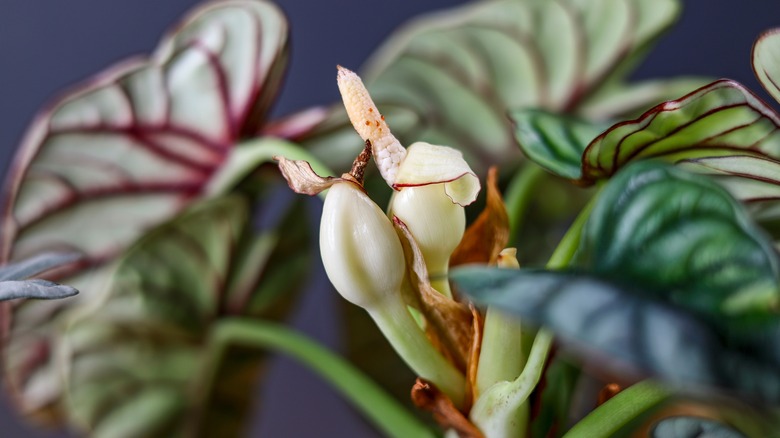You're A Lucky Plant Owner If Your Elephant Ear Shows Off With This Gorgeous Bloom
"Elephant ear" is a common name for several plant genuses within the Araceae family, including Colocasia, Alocasia, and Xanthosoma. If you're a plant lover, you may have been drawn in by elephant ears' massive heart-shaped leaves and lush greenery. But did you know that these tropical beauties will also produce large flowers under the right conditions? With a bit of a nudge from its owner, an elephant ear plant can produce a flower almost yearly. Their blooms can resemble a calla lily, usually with a white spadix surrounded by a light-colored spathe. Elephant ears only bloom with the right climate, often leaving their owners baffled at how to achieve such wonderful flowers. If your elephant ear produces a seemingly spontaneous bloom, it's a sign that you're doing everything right! But if you're tired of waiting for a miracle, there are some steps that you can take to give your plant the best chance at giving you a flower.
Most houseplants only flower once all of their needs have been met. This includes ample sunlight for the specific plant, proper moisture levels, and sufficient nutrients— which can be provided with either fertilizer or plant food. These ideal factors should give the plant enough energy to divert its attention away from leaf production. Flowering is a natural part of a plant's reproductive cycle, meaning your elephant ear also needs to reach maturity before it will produce one. Once all of the proper conditions are met for reproduction, your plant may reward you with a yearly bloom.
Encouraging your elephant ear to focus on blooms
Getting your elephant ear to bloom might require a bit of determination and a dash of patience. Elephant ears can be shy about flowering, often surprising their owners when they do. Elephant ears don't thrive in all climates, so it is important to try and recreate their natural habitat. As tropical plants, they tend to thrive in moist environments, so you will want to ensure that you are potting them in rich, well-drained soil. It should be kept moist as your plant continues to grow, so don't be afraid that you are going to overwater your plant, especially with the proper drainage in place. You never want to let the soil completely dry out, as it can be much harder to revive your plants from lack of water. Elephant ears also thrive in high humidity, between 60% and 80%, so use a humidifier near the plant or place it on a pebble tray filled with water.
Elephant ears tend to prefer partial shade or bright, indirect sunlight. The ideal temperature for elephant ear plants to bloom is between 70 and 85 degrees Fahrenheit. If you're planting your elephant ear outdoors, it is best to bring it inside once temperatures begin to drop below 60 degrees Fahrenheit, as this will keep your plant thriving through the winter. Occasional feeding with a gentle, balanced fertilizer containing potassium will also help to encourage blooms. With these conditions — and a bit of luck — your elephant ear should have the best chance of producing a wonderful bud.

